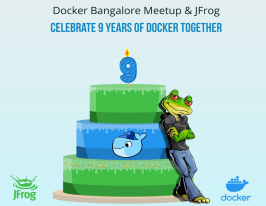Supply Chain Security Exposed @ JFrog Private Event Sydney 2022
Developer Security Tips from the JFrog Research Team
September 6, 2022
2 min read
Supply Chain Security Exposed! Developer Security Tips From the JFrog Research Team
Again and again, I am asked how one can start with the topic of security in an agile project environment. What are the essential first steps, and what should you focus on at the beginning? Of course, this raises the question of suitable methodologies and tools. At the same time, the company’s strategic orientation must be included in this security strategy. We have also learned in the recent past that attacks like the “Solarwinds hack” are becoming more and more sophisticated and that the attackers now focus on the entire value chain. What tools are there, and where should they be used? How can I start tomorrow to prepare myself for the future against the challenges of cyber attacks? And that’s precisely what you will get an answer to here.
Baruch Sadogursky
Principal Developer Advocate, JFrog
Baruch Sadogursky (@jbaruch) did Java before it had generics, DevOps before there was Docker, and DevRel before it had a name. He started DevRel at JFrog when it was ten people and took it all the way to a successful $6B IPO by helping engineers solve problems. Now Baruch keeps helping engineers solve problems but also helps companies help engineers solve problems. He is a co-author of the “Liquid Software” and “DevOps Tools for Java Developers” books, serves on multiple conference program committees, and regularly speaks at numerous most prestigious industry conferences, including Kubecon, JavaOne (RIP), Devoxx, QCon, DevRelCon, DevOpsDays (all over), DevOops (not a typo) and others.






